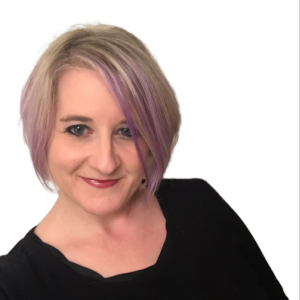May 7, 2025
You can't ace an assignment when you aren't sure what the work entails or what it should look like when completed.
To fulfill your brand's strategic goals, you need a clear understanding of what to create, whom to engage, and why they'll find it worth doing so.
A content marketing mission statement provides that clarity.
Read on to understand what it is and how to build one for your business with some real-life examples that work and one that could be better.
What's a content mission statement?
A content mission statement is one of the three components in a content marketing strategy.
Similar to a company mission statement on the about page of any business website, a content mission statement summarizes the focus, guiding principles, and priorities your brand upholds through its content.
Unlike a company mission statement, your content mission statement outlines the value your audience will receive rather than emphasizing the business advantages. It covers three elements:
Core audience: Who you aim to help with your content
What will be delivered: Types of information and assistance your content will provide
Desired outcome or benefit: Reasons why the audience should consider the content relevant, appealing, and valuable
In addition to governing your team's strategic decision-making, the content mission statement should also outline the creative characteristics that distinguish your brand's storytelling from its content competitors, such as:
Kinds of stories your brand will tell (i.e., topics and perspectives)
How those stories take shape (i.e., core content formats and platforms)
How the assets work collectively to create a desirable audience experience
On the Orbit Media blog, Andy Crestodina lays out a simple formula to write your content mission statement:
"Our company is where [Audience X] finds [Content Y] for [Benefit Z]."
Note: “Our company” refers to everything your business creates, publishes, and shares with its customers.
Let's look at how to fill in the X, Y, and Z variables:
1. Audience is your who
Your business likely has multiple target audiences. Your content mission statement should focus on the one audience segment for whom your content can do the most good.
To pinpoint that, look for opportunities where you might:
Serve an unmet need or deliver value that your competitors have overlooked
Fuel a niche interest
Address a knowledge gap or obstacle preventing an audience from achieving its goals
Tech brand Cisco creates content for multiple purposes. This mission statement appears on its Cisco in Education resource center page:
“Cisco is your trusted technology partner in education. We securely connect educators, students, and administrators with transformative technologies that power inclusive learning for all.”
It clearly states who the content is for — educators, students, and administrators. However, that target is broad, which could hinder the three segments from seeing themselves and their needs reflected in the content experience.
To narrow your focus, consider your most pressing marketing goal and ask which audience will best help the brand achieve it.
For example, if your top priority is to increase brand loyalty, your audience might be customers, and your content priority would be post-purchase service. Or, if your organization prioritizes sales, your target audience might be the sales team, and your content would address topics with which they can gain traction with prospects.
Example: Inc.
Media brand Inc. offers a great example of a content mission statement with a clear audience focus — the American entrepreneur.
"Inc. is the voice of the American entrepreneur. We inspire, inform, and document the most fascinating people in business: the risk-takers, the innovators, and the ultra-driven go-getters that represent the most dynamic force in the American economy. Founded in 1979 and acquired in 2005 by Mansueto Ventures LLC, Inc. is the only major brand dedicated exclusively to owners and managers of growing private companies, with the aim to deliver real solutions for today's innovative company builders."
While anyone interested in business would likely benefit from Inc.'s content offerings, its mission is to inform those who own and manage private companies.
2. Benefit to the audience is your why
Once you determine your primary audience, summarize the distinct benefits they will receive from your content.
Audience personas can help inform your understanding of their needs and interests. However, you should also detail why your business is uniquely qualified to serve them and how your approach differs from what they might find elsewhere.
Take another look at the end of the Inc. statement, where it speaks to audience benefits:
"… with the aim to deliver real solutions for today's innovative company builders."
By noting Inc.'s focus on providing practical advice and actionable guidance, the statement distinguishes the brand's content from competitors that publish thought leadership content or original research reports.
Inc. content may still feature primary research and novel perspectives; however, narrowing the topical niche helps the team make more efficient editorial decisions. When production resources are limited, knowing which story ideas fit (and which don't) means less budget waste.
As you develop your content mission statement, review your audience research to remind yourself what your brand can do for the audience that other content resources don't or how you can address needs overlooked by your competitors. It allows you to highlight your content’s distinct advantages and not make it all about your brand.
Example: Eater
Here's a mission statement published on the website for Vox Media's Eater content:
"Eater is the authority on dining and food. Our trusted editors are on the ground in the greatest food cities around the world to show you where to dine, drink, and enjoy."
Even in this brief statement, Eater references two distinct benefits for its audience:
Its writers are subject matter experts, so readers can rely on the content for trustworthy information and relatable advice.
Its storytelling is built on the direct experience of these writers. Knowing that Eater's content isn't just compiled from third-party materials helps distinguish it from competing review sites.
Example: Well Said
Traditional banking services and products aren’t accessible to all consumers. However, Canadian financial services company ATB Financial believes financial literacy education should be.
The mission outlined on the brand’s Well Said content hub speaks directly to customer segments whose financial planning needs and challenges tend to be overlooked and underserved by other financial institutions. Those segments include people who make their living as creators, performers, and gig workers, as well as economically disadvantaged populations:
“What keeps you up at night when you think about your finances? We're asking Albertans real questions about money and sharing their honest answers. Discover how others are navigating similar challenges you are. Ditch one-size-fits-all solutions, and find unconventional wisdom, diverse perspectives, and actionable tips to help you achieve your financial goals — while staying true to your lifestyle.”
3. Content is your how
Identifying your audience and the benefits they'll receive are relatively straightforward tasks. However, your content mission statement must also account for the resonant and valuable experience your content delivers. That's not something based solely on logic and data because it involves a strong emotional component.
The second line in Eater's mission statement offers a simple example: "Our trusted editors are on the ground in the greatest food cities around the world to show you where to dine, drink, and enjoy."
It reassures consumers that Eater understands which dining experiences they'll find appealing and helps them discover delightful options.
Example: Workflow, by ServiceNow
Many AI platforms promise to help businesses work more efficiently and achieve better results. ServiceNow's Workflow content hub outlines how it activates that promise, emphasizing the distinct, human-centric focus that drives its approach:
"Mobility, AI and other emerging technologies may change how work gets done and how companies go to market. Equally important, although more often overlooked, is how these technologies can make work better for people.
"At Workflow, we cover the evolving relationship between people and technology at work. We seek to understand how companies and individuals can prosper by harnessing the immense power of big data, machine learning, and advanced analytics. We publish regular insights about the future of work, backed by original research and reporting."
The mission statement illustrates that Workflow's content doesn't just cover technology and its business applications. It explores how a better understanding of machine learning, big data, and analytics empowers workers to prosper in their roles.
As a brand, what do you value most? What subjects are you most passionate about, have the deepest experiences with, or possess more authority and insight on than any other content publisher in your space? Your answers surface the stories your brand was meant to tell and how to compel your audience to engage with them.
Who does your brand want to be?
A clear content mission statement helps the team create stories that fit your company's vision of marketing success and avoid ones that don't. It can also highlight the principles and priorities of your business. That meaningful differentiator will set the stage for increased engagement, greater trust, and deeper loyalty from your target audience.
Updated from a January 2022 story.
Want more content marketing tips, insights, and examples? Subscribe to workday or weekly emails from CMI.
HANDPICKED RELATED CONTENT:




